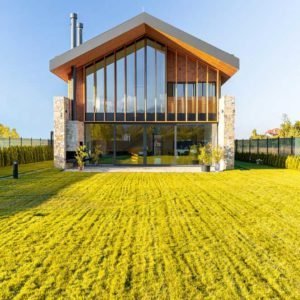Exploring the harmonious blend of natural materials in architecture leads us to the dynamic duo of wood and stone, a combination that has been revered for its aesthetic appeal and resilience. In the realm of compound wall designs, this pairing is not just a choice but a statement of elegance and strength. The interplay between the warm tones of wood and the enduring nature of stone creates a boundary that is both inviting and imposing. This blend not only enhances the beauty of the exterior but also integrates seamlessly with the landscape, providing a sense of cohesion and timeless charm.
Natural Harmony in Wood and Stone Compound Wall Designs
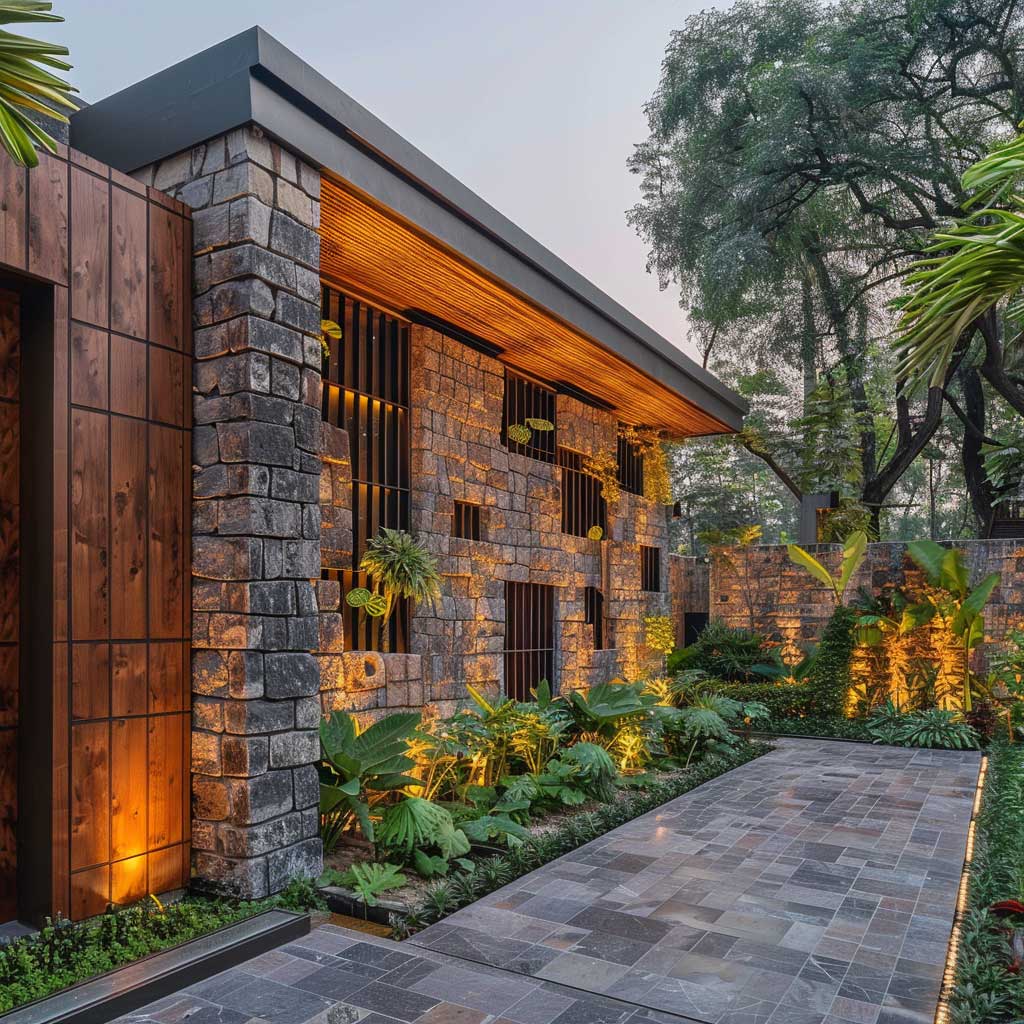
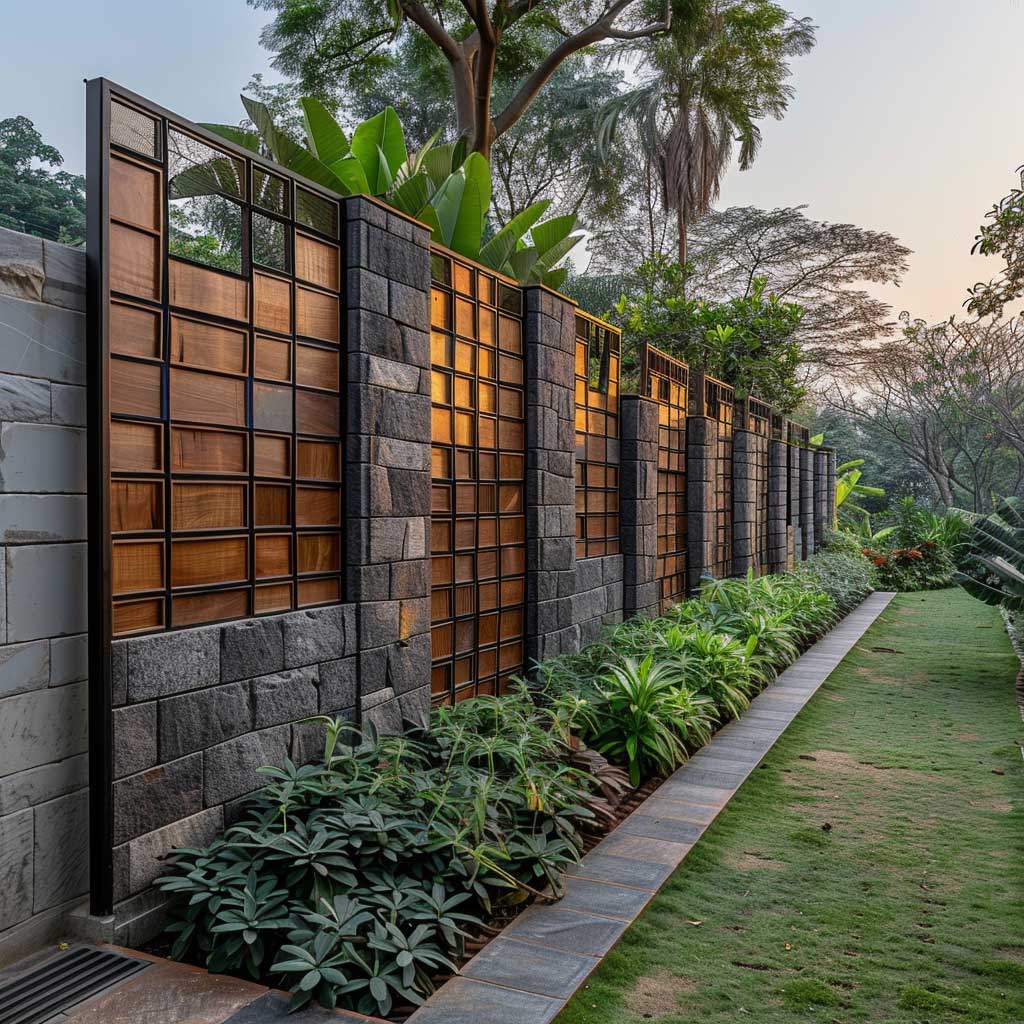
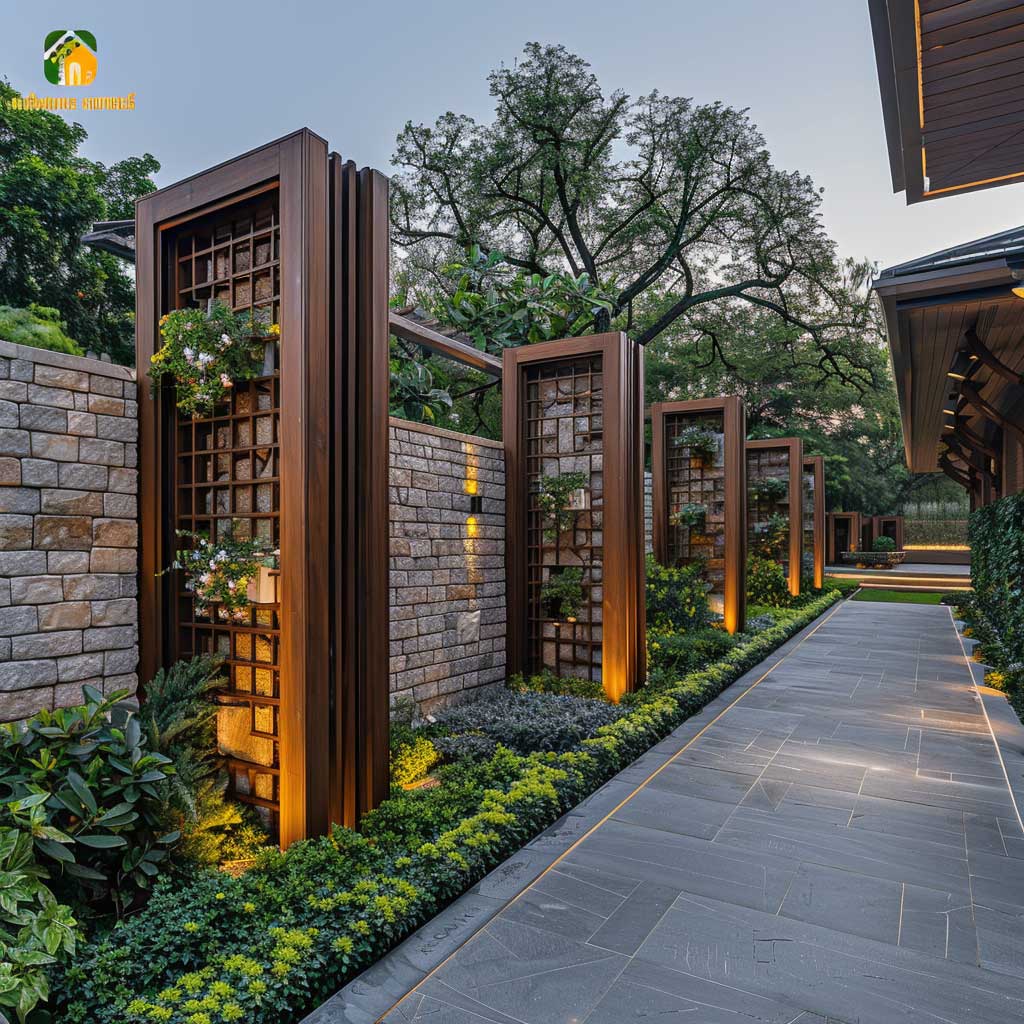
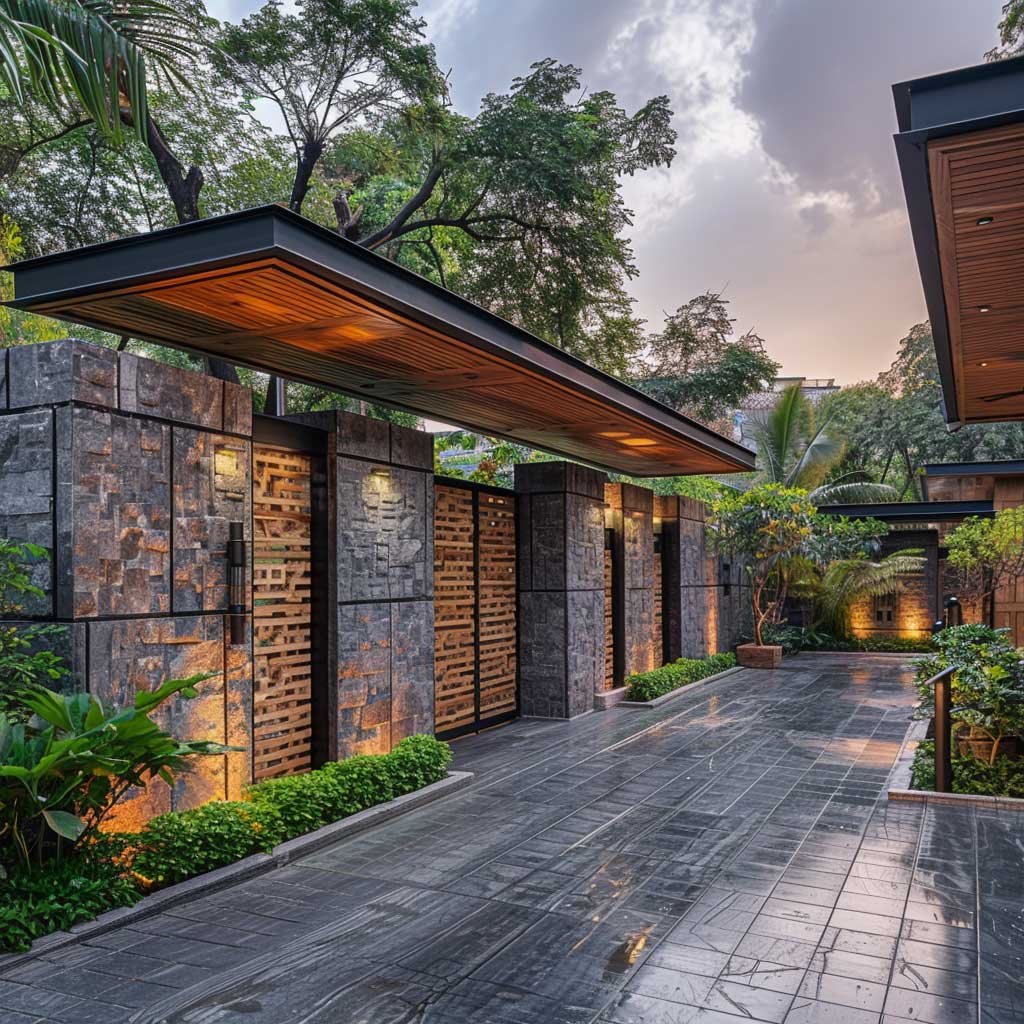
In the world of architecture and landscape design, the quest for materials that not only endure but also enhance the beauty of their surroundings has led to innovative combinations. Among these, the integration of wood and stone in compound wall designs stands out for its ability to marry strength with elegance, durability with beauty. This design philosophy goes beyond the mere functional aspect of providing privacy and security; it seeks to create a seamless dialogue between man-made structures and the natural world.
The essence of using wood and stone together lies in their inherent differences yet complementary nature. Stone, with its cool, rugged demeanor, brings a sense of timelessness and permanence. Wood, on the other hand, introduces warmth, texture, and a tactile quality that invites touch. When these materials are thoughtfully combined in a compound wall design, the result is a structure that resonates with the landscape’s natural harmony, blending effortlessly with the environment while standing as a testament to human ingenuity.
A compound wall that exemplifies this natural harmony does more than delineate boundaries; it becomes a focal point of the landscape, contributing to the overall aesthetic appeal of the property. Such walls are designed not just for the present but with an eye towards how they will age, weather, and mature within their setting. The stone may gather moss or patina, adding character, while the wood ages to a silver-gray, reflecting the passage of time.
The design process for these walls involves careful consideration of the local climate, the architectural style of the property, and the specific characteristics of the chosen materials. For instance, a compound wall facing the harsh afternoon sun might feature deeper stone bases to withstand the heat, topped with wood that’s been treated to resist UV damage. The choice of stone and wood types, too, is crucial, with considerations for color, grain, and texture playing a role in achieving the desired aesthetic outcome.

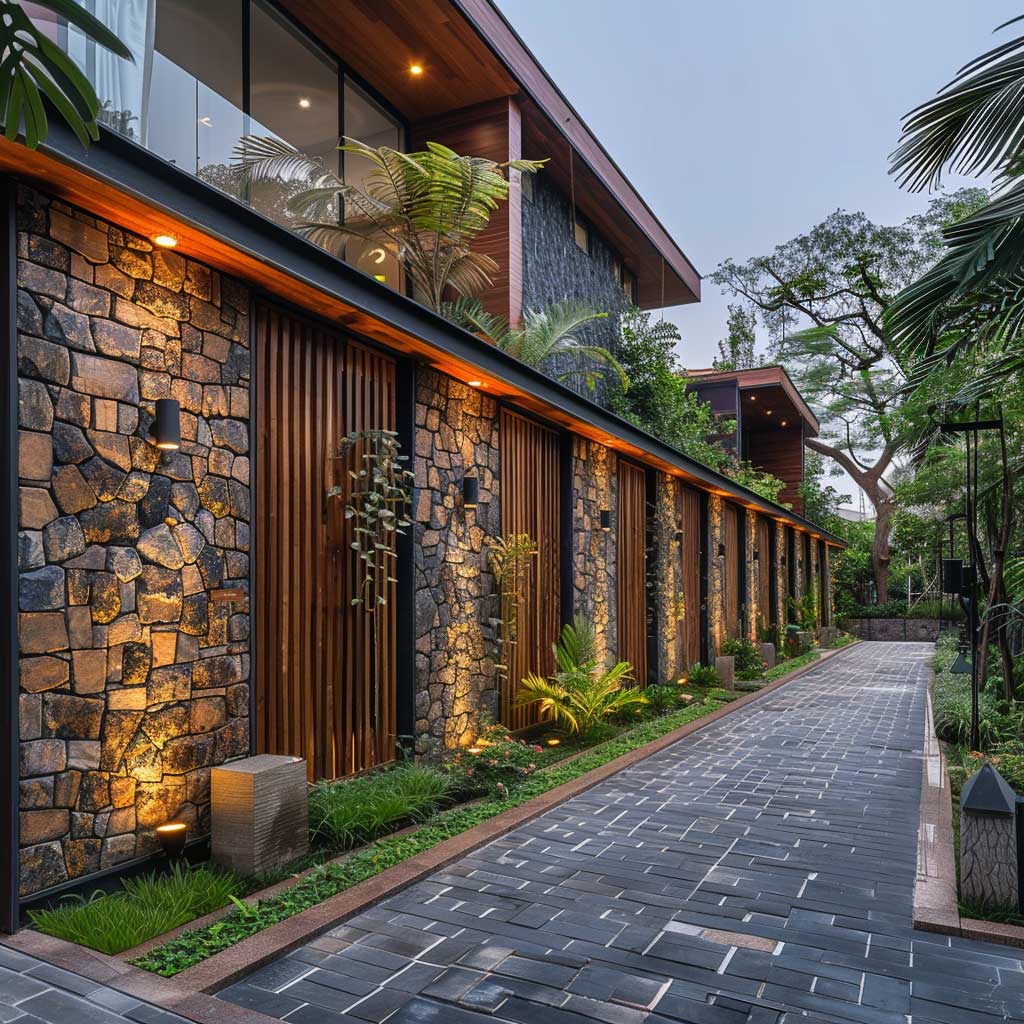
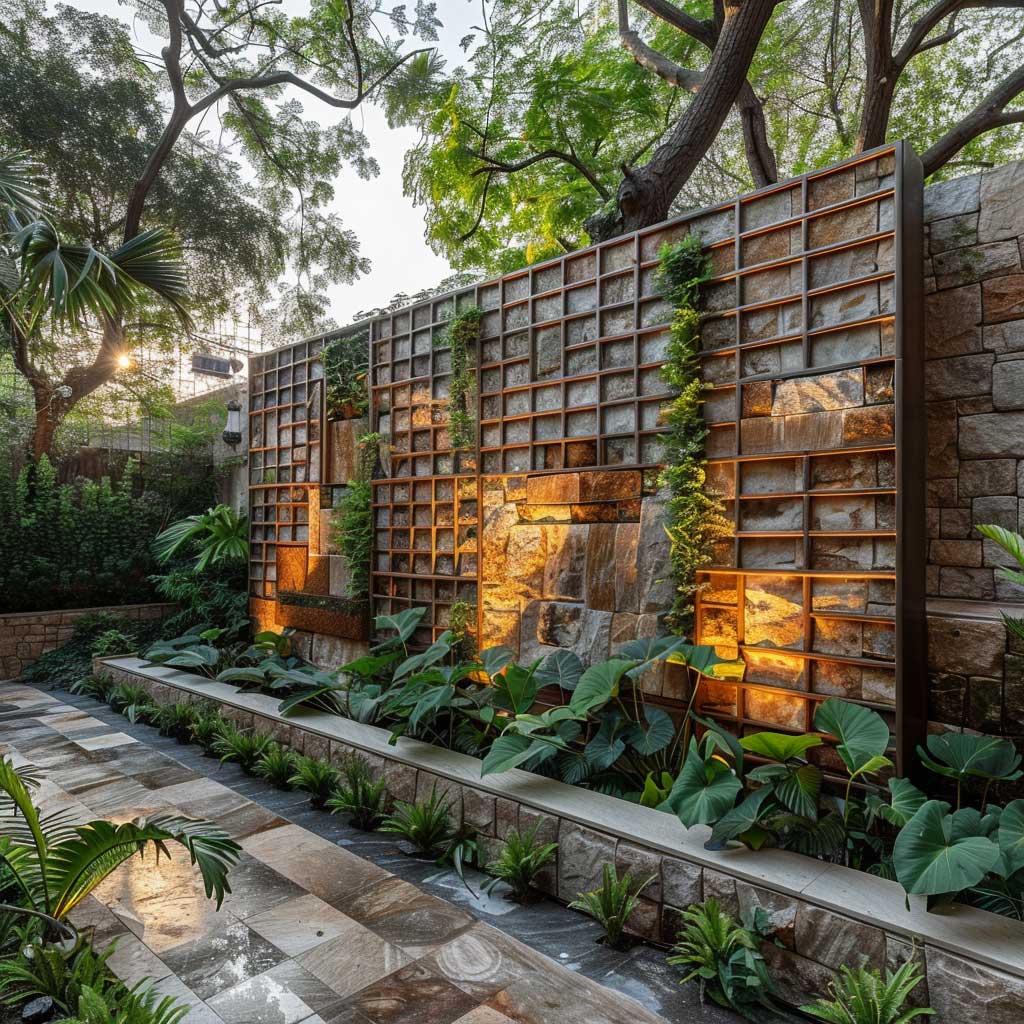

Moreover, the integration of wood and stone in compound wall designs can also incorporate environmental sustainability. By selecting locally sourced materials, the design not only reduces the carbon footprint associated with transportation but also ensures that the wall reflects the local landscape’s unique beauty and character.
In crafting a compound wall that embodies natural harmony, designers and homeowners alike embark on a journey of exploration. They explore the possibilities inherent in combining traditional and modern materials, discover new ways to blend function with form, and ultimately create spaces that resonate with the natural world. Such walls remind us that the boundaries we erect can also be bridges—connecting us to our environment, our history, and to future generations who will enjoy the beauty we’ve helped to shape.
This approach to compound wall design, where wood and stone converge in a celebration of natural harmony, offers a timeless solution to the practical needs of boundary and security. It stands as a reflection of the beauty that can be achieved when we choose to work with nature rather than against it, creating structures that are not only functional but also deeply connected to the landscape they inhabit.
Elegance Unearthed with Wood Accents in Stone Wall Structures
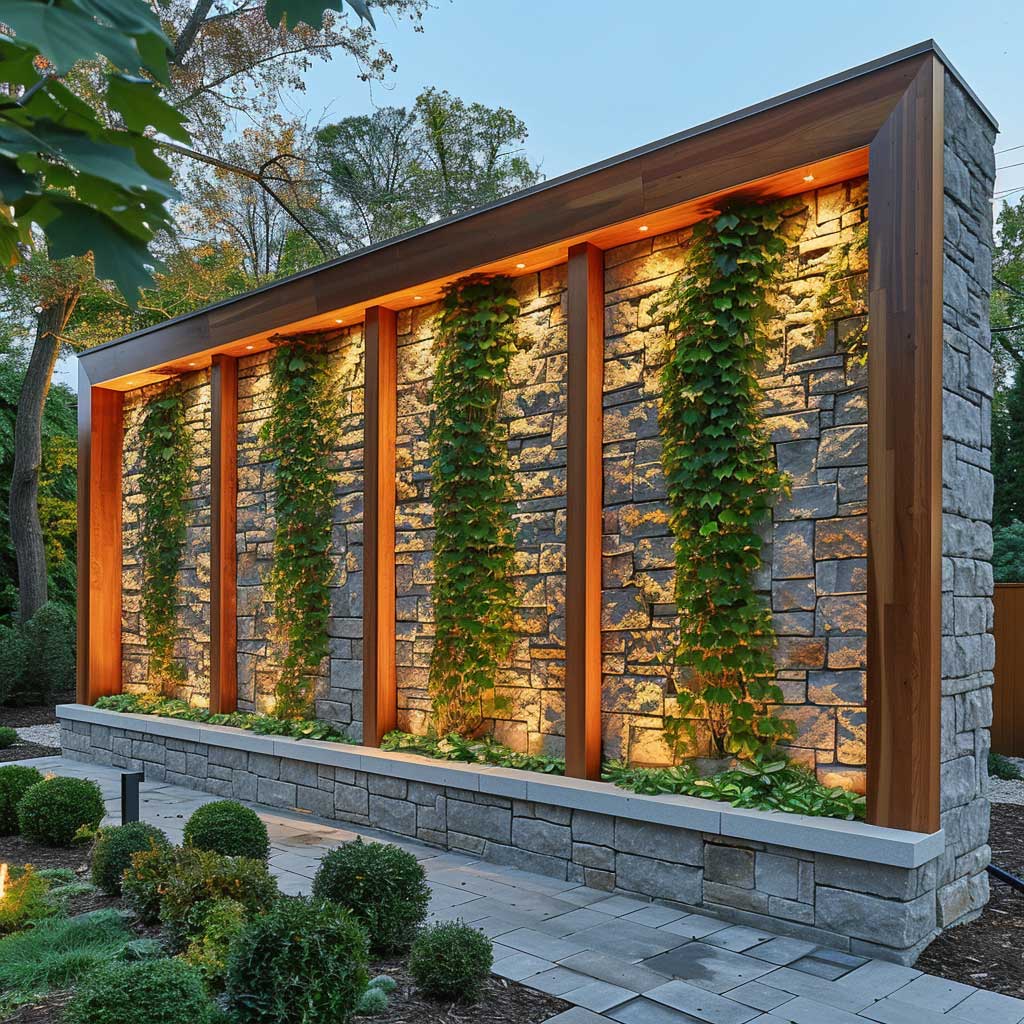
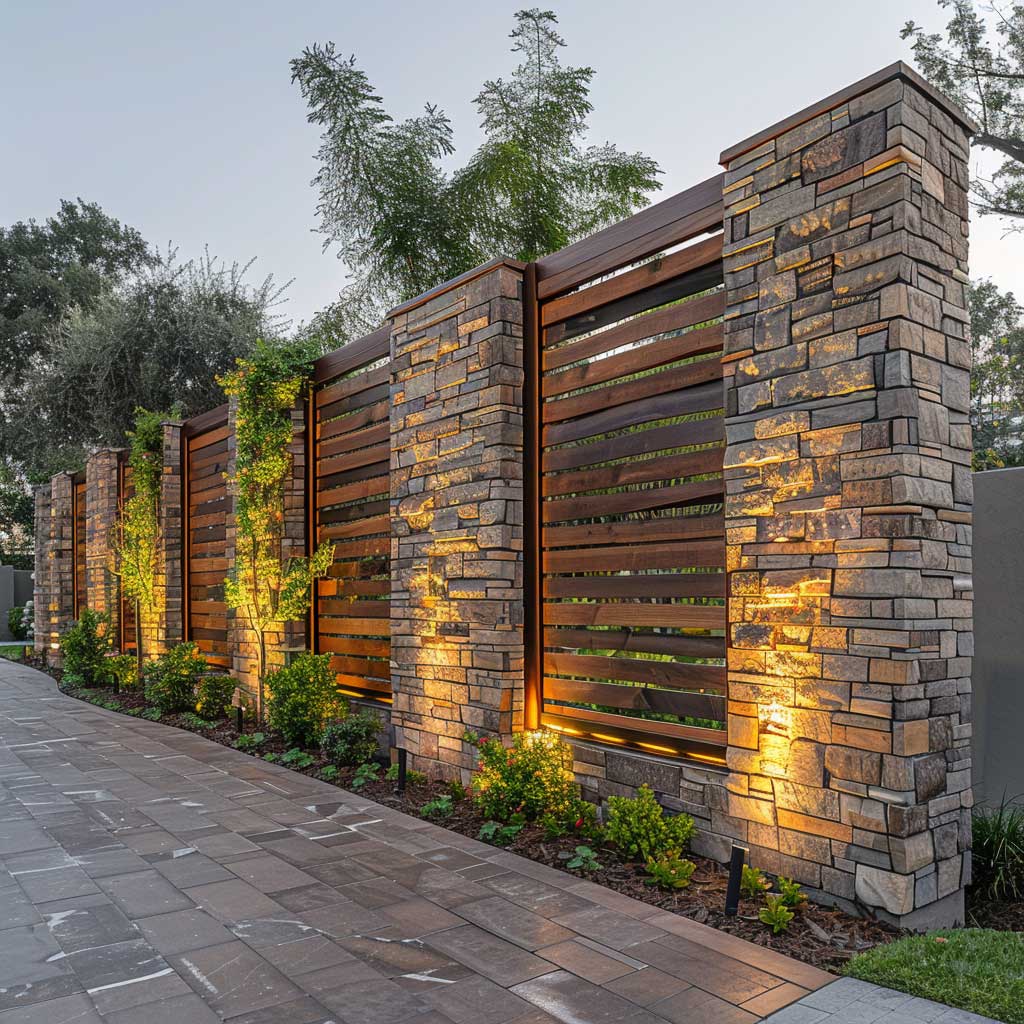
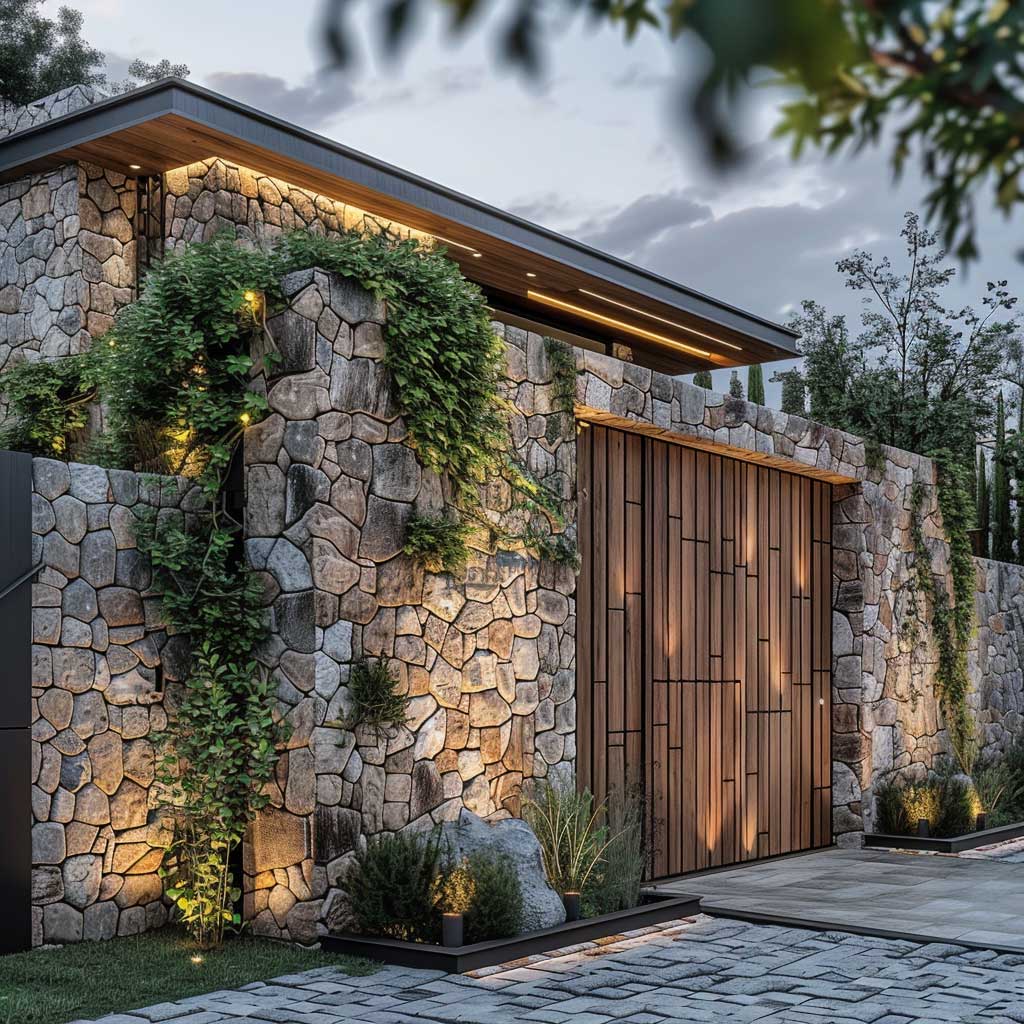
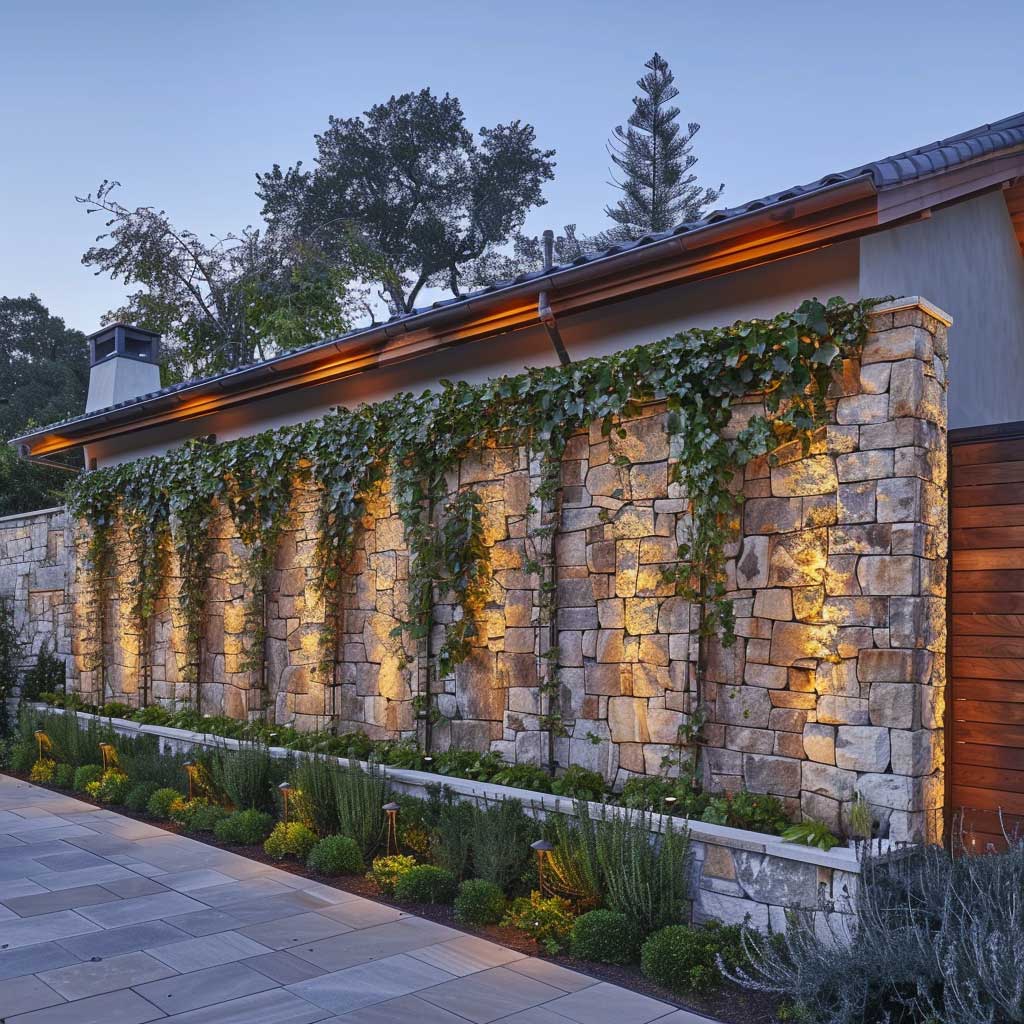
The interplay between the natural ruggedness of stone and the warm, inviting texture of wood in compound wall designs heralds a return to materials that speak of the earth’s foundational beauty. This essay delves into how wood accents can elevate the inherent elegance of stone wall structures, creating compound walls that are not just physical boundaries but artful statements of design.
At the core of this design ethos is the synergy between stone and wood. Stone, with its durability and timeless appeal, provides a robust foundation for any structure. When accented with wood, a material known for its warmth and versatility, the compound wall transcends its basic function, becoming a nuanced expression of elegance and strength. This section explores the selection process of materials, emphasizing sustainability and local sourcing.
The architectural principles guiding these designs focus on harmony, balance, and the natural integration into the surrounding landscape. Through the strategic use of wood accents—be it in the form of panels, beams, or intricate carvings—the stone wall is imbued with a sense of refinement. This part discusses the design process, including considerations for weathering, maintenance, and the visual impact of material combinations.
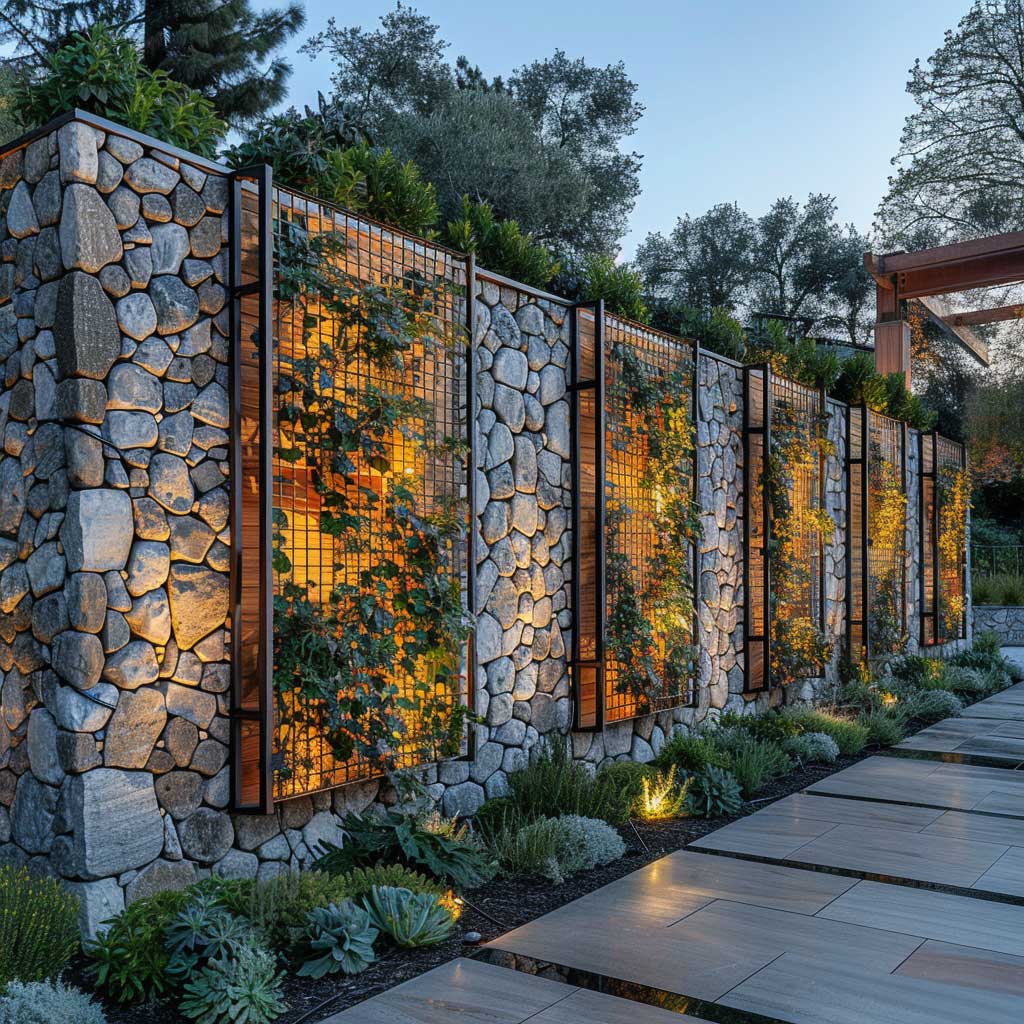
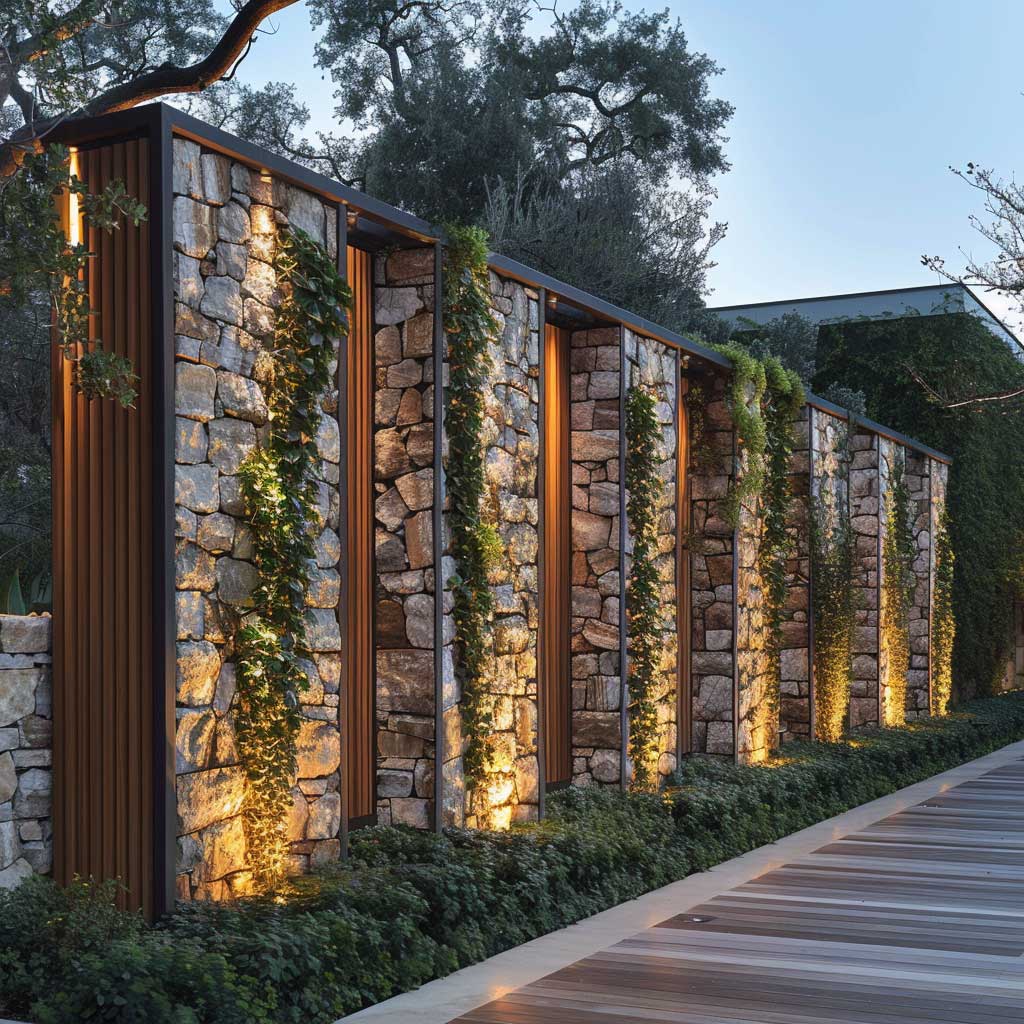
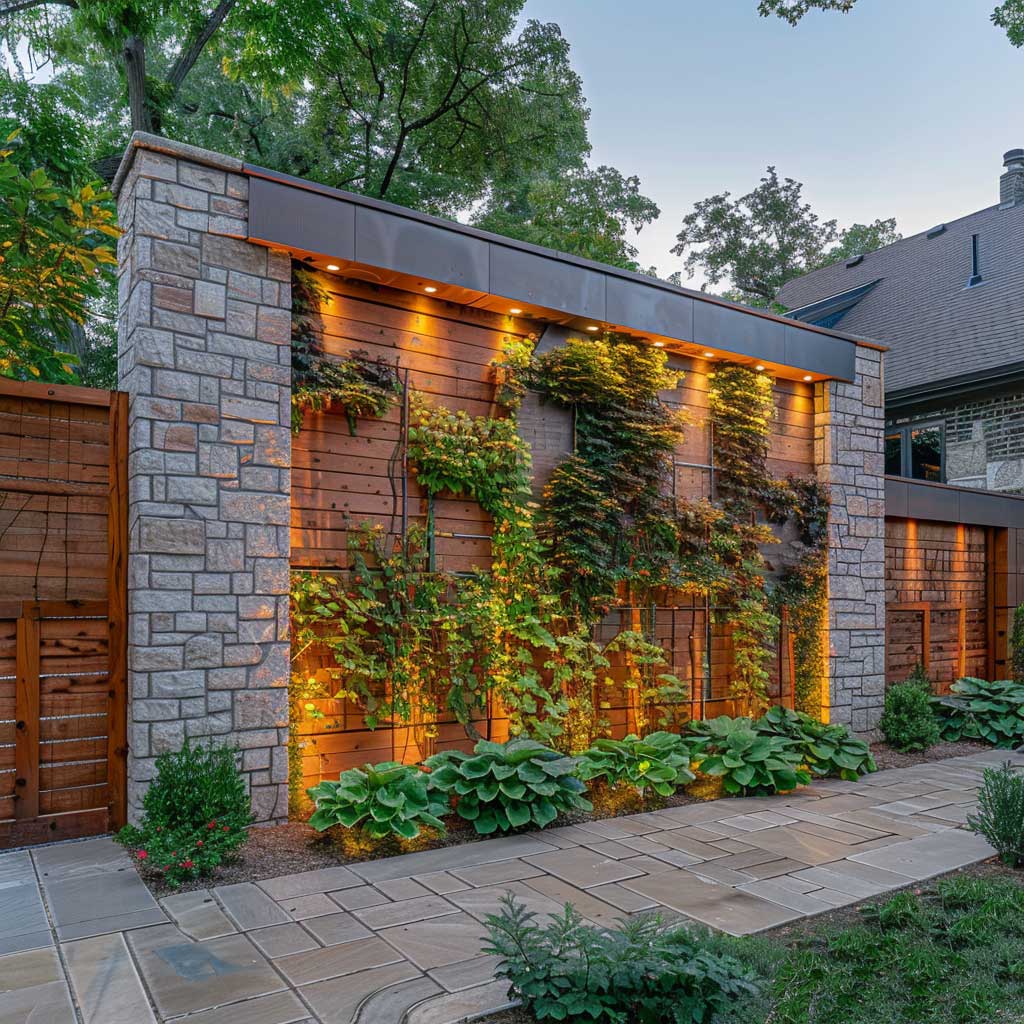
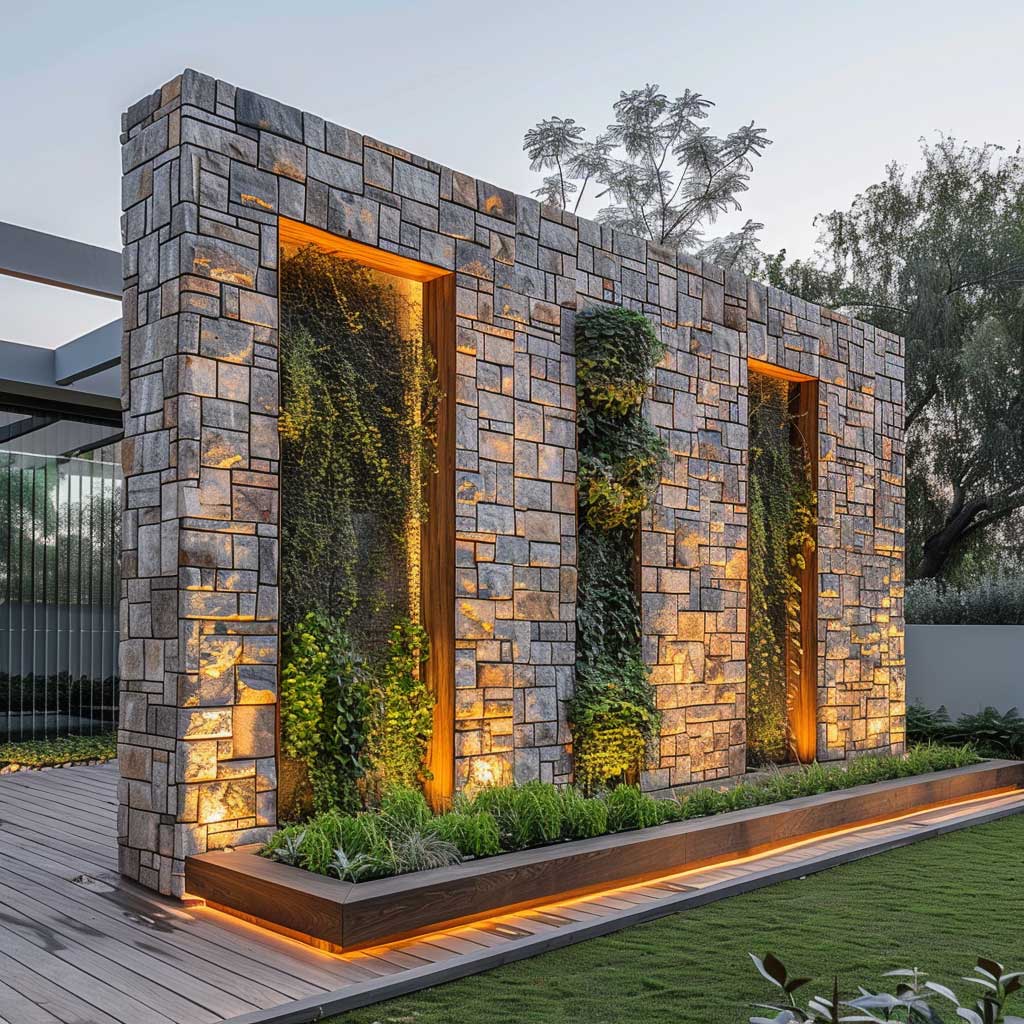
A significant aspect of incorporating wood accents into stone walls is the potential for these structures to blend seamlessly with their environment. Whether set against a lush garden, a rocky outcrop, or a more manicured landscape, the compound wall becomes a part of the scenery, enhancing rather than detracting from the natural beauty. This section covers the techniques for achieving such integration, from the choice of plantings to the orientation of the wall.
Examining specific examples where wood accents have transformed stone walls into striking features of a property provides concrete insights into the versatility and impact of this design choice. This part would highlight a few select projects, detailing the challenges faced and the solutions implemented to achieve a balance between aesthetics and functionality.
In the realm of compound wall designs, the combination of wood and stone represents a sophisticated approach to creating boundaries that are both protective and permeable to beauty. This concluding section reflects on the enduring appeal of these natural materials and the promise they hold for future designs that seek to marry functionality with environmental consciousness and aesthetic elegance.
Sculpting Privacy with Wood and Stone in Compound Wall Artistry


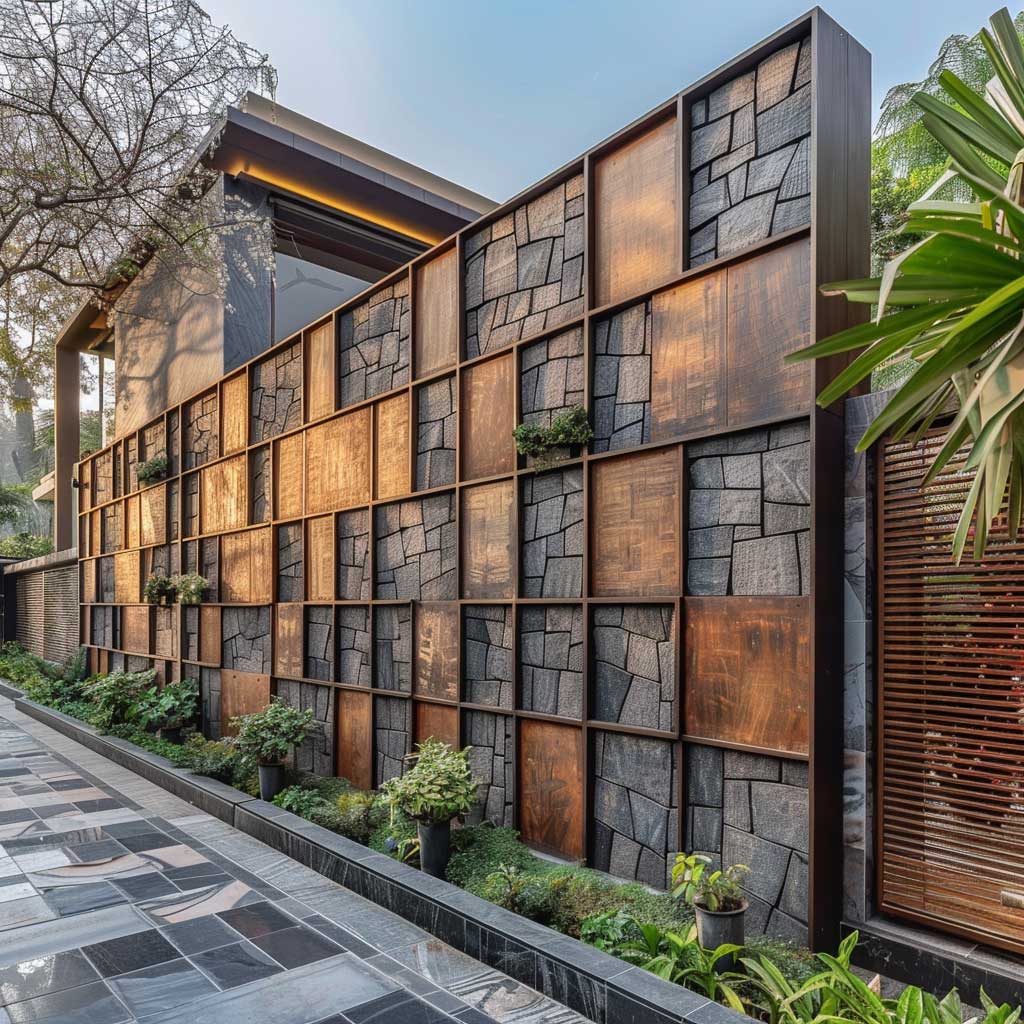
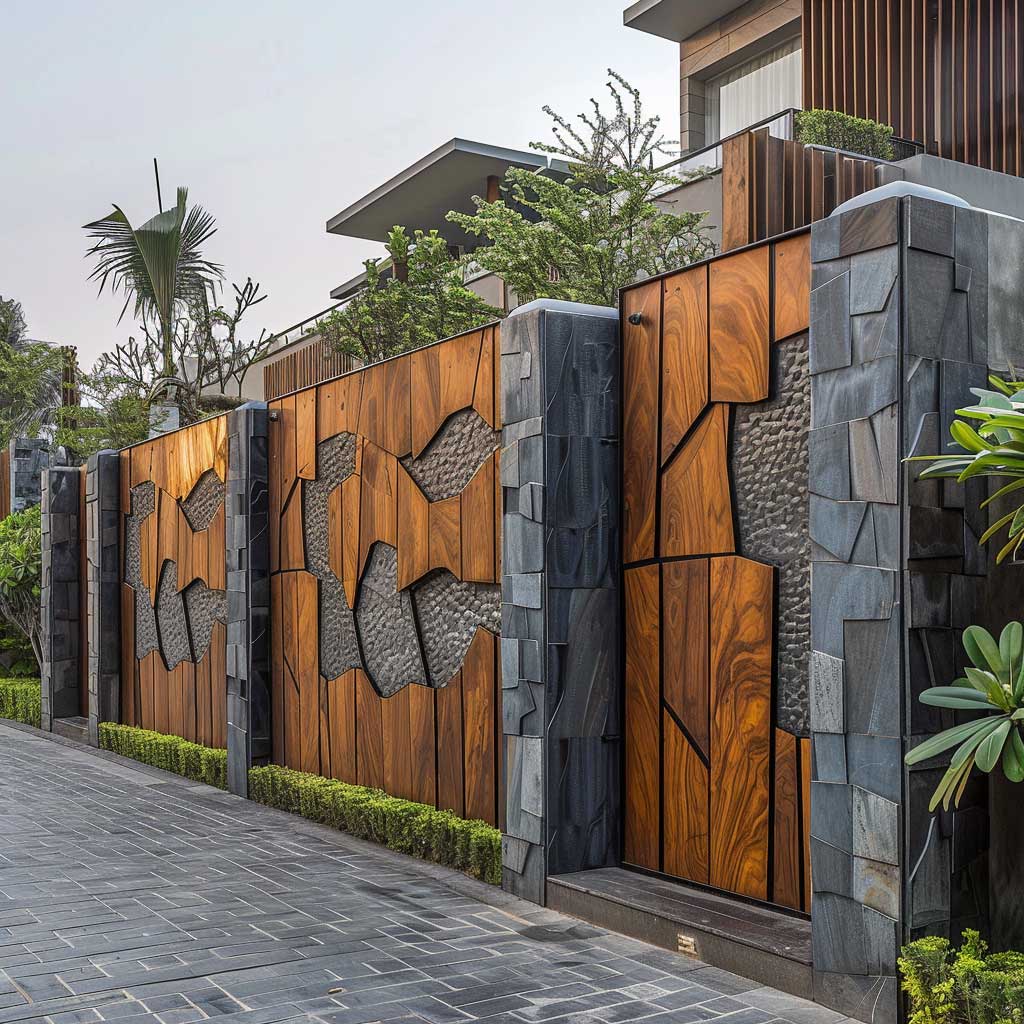
The art of crafting private spaces within the outdoor environment calls for a delicate balance between openness and enclosure. This essay explores the nuanced approach to designing compound walls that utilize the natural beauty and durability of wood and stone to sculpt areas of privacy. It delves into how these materials are selected and combined to create walls that are not only barriers but also beautiful elements of landscape design.
The foundation of any compound wall design lies in the thoughtful selection of materials. For walls intended to provide privacy, the choice of wood and stone is pivotal. This section would discuss the criteria for selecting types and finishes of wood and stone that offer the best combination of privacy, durability, and aesthetic appeal. Considerations include the local climate, the architectural style of the surrounding buildings, and the desired level of maintenance.
Beyond the mere selection of materials, the design techniques employed play a crucial role in how effectively a compound wall provides privacy. This part would examine the methods architects and designers use to arrange wood and stone in patterns or configurations that maximize privacy while allowing for natural light and ventilation. Techniques such as varying the height of the wall, incorporating living elements, and creating visual interest with architectural features would be explored.
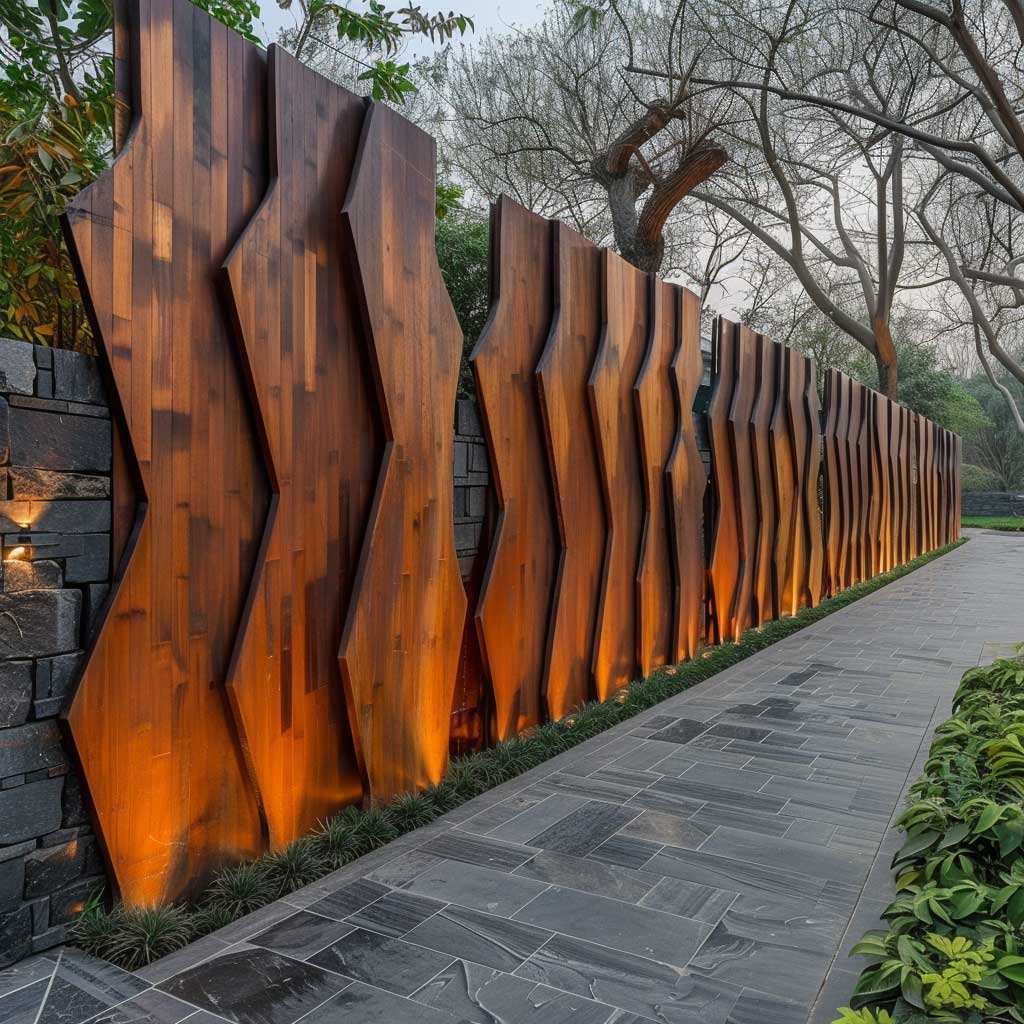

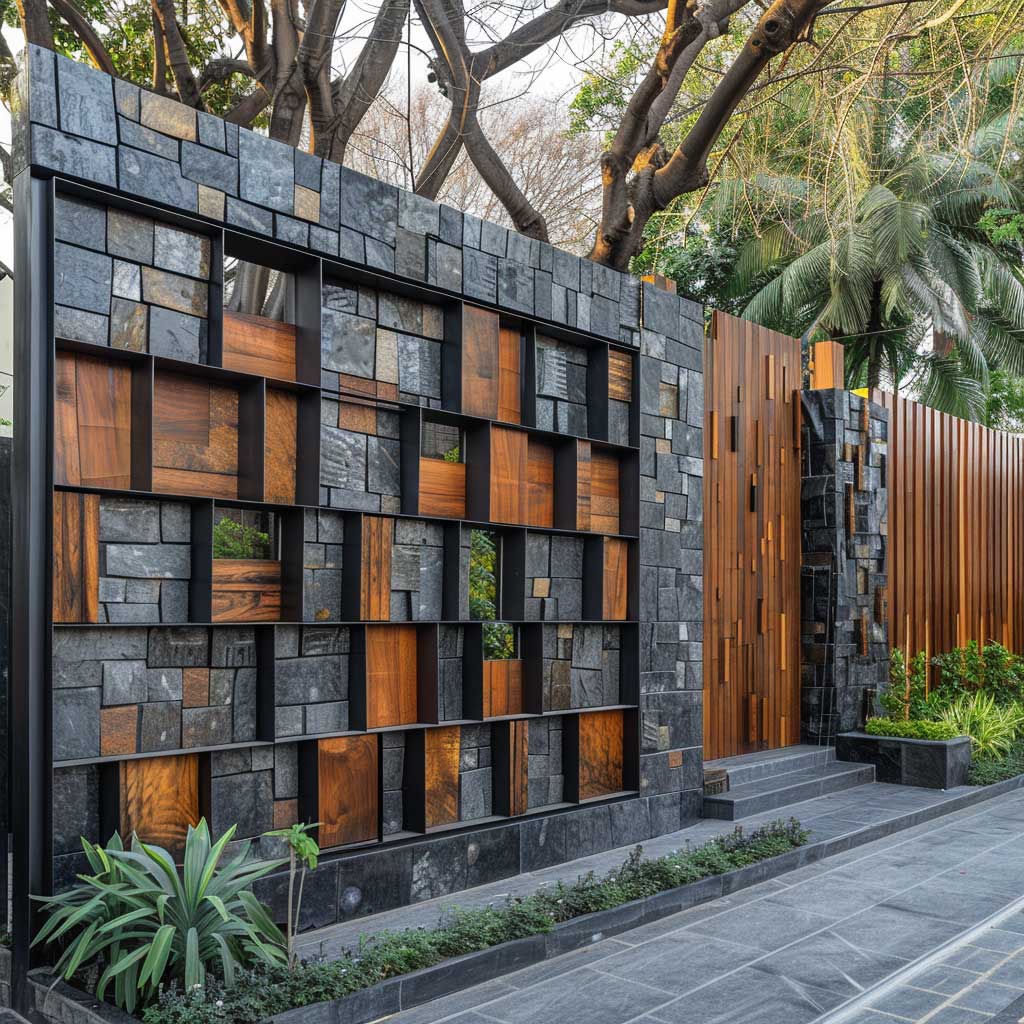
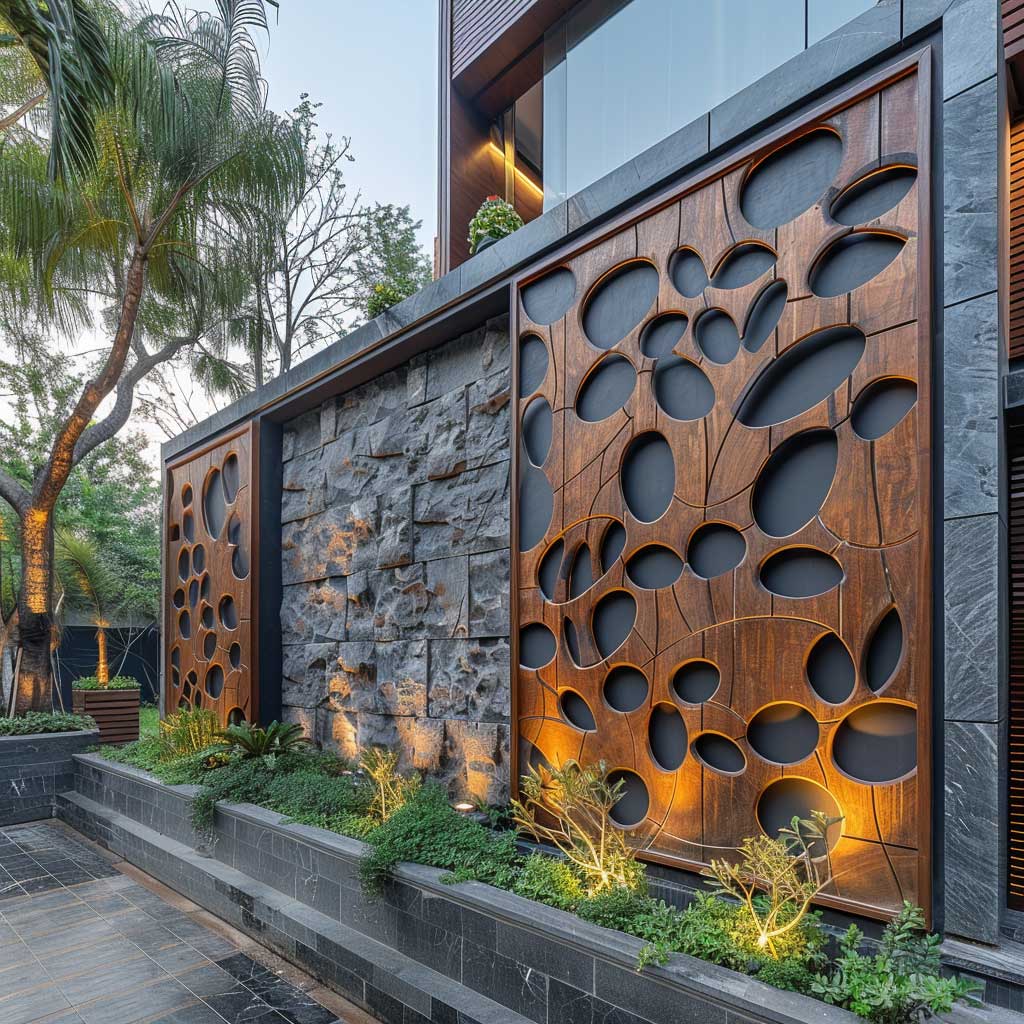
A compound wall that offers privacy should not feel like a fortress. This section would cover strategies for integrating the wall into the surrounding landscape to ensure it enhances rather than detracts from the overall aesthetic. Topics might include the use of climbing plants, the creation of natural transitions using stone and wood elements, and the alignment of the wall with existing natural features to create a cohesive and inviting outdoor space.
Highlighting specific projects where wood and stone have been effectively used to create private outdoor spaces would provide practical insights into the process and benefits of this design approach. This part would present a range of examples, from urban settings to rural retreats, showcasing the versatility and impact of these materials in different contexts.
In the pursuit of privacy, the combination of wood and stone in compound wall designs emerges as a powerful tool in the architect’s and landscape designer’s arsenal. This concluding section would reflect on the enduring appeal of these materials, their contribution to creating serene and secluded spaces, and the potential for future innovations in design that respect both the need for privacy and the desire for beauty.
The fusion of wood and stone in compound wall designs embodies a perfect balance between nature and craftsmanship. This combination not only stands the test of time in terms of durability but also evolves into a more beautiful version of itself with age. As the wood weathers and the stone gathers patina, the compound wall becomes a living testament to the beauty of aging with grace. Adopting this duo in compound wall construction is more than an architectural choice; it’s a commitment to aesthetic depth, environmental harmony, and structural integrity. The natural elegance and robustness of wood and stone together ensure that the compound wall is not merely a boundary but a significant design element that enhances the overall appeal of the property.

